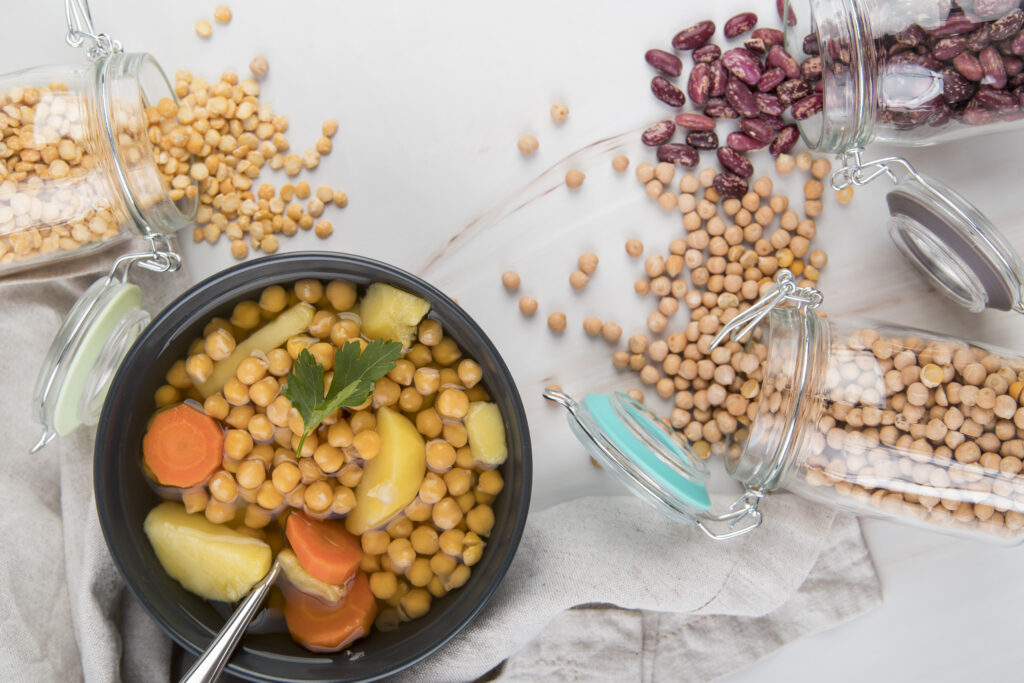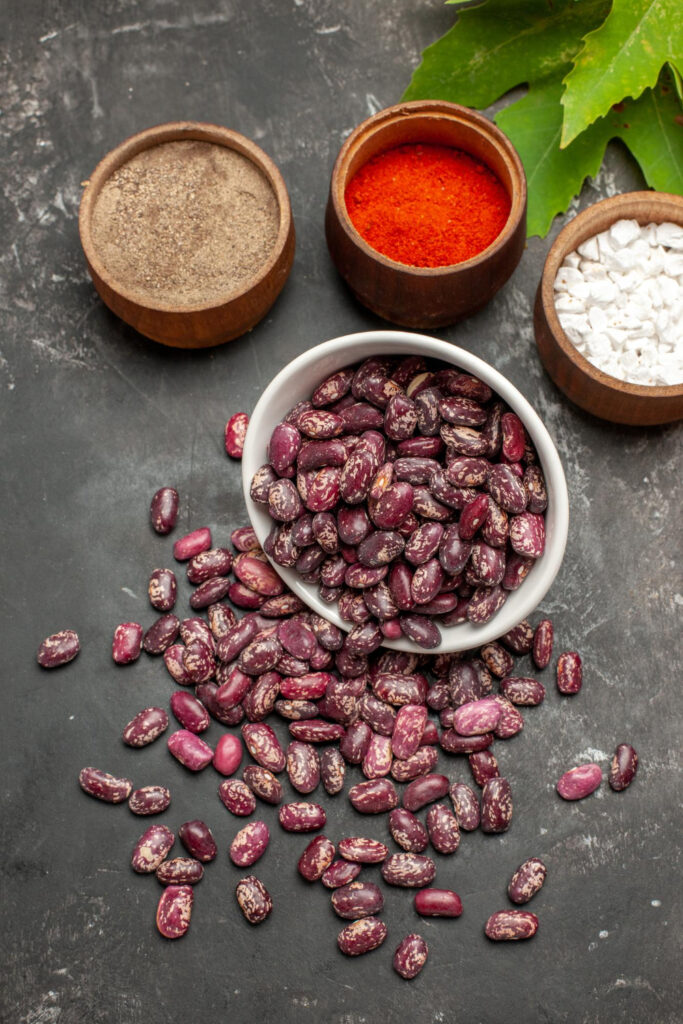
Fast Facts
Soaking beans can reduce cooking time by up to 50%
Soaked beans are easier to digest, reducing gas and bloating
Soaking helps reduce antinutrients, improving nutrient absorption
Beans soaked overnight are perfect for creamy dishes like hummus and soups.
Beans, peas, and lentils are all legumes, a group of plant-based foods that grow in pods. According to the United States Department of Agriculture (USDA), legumes are a vegetable subgroup packed with nutrients. These nutritional powerhouses offer a wealth of health benefits at a budget-friendly price, from folate and potassium to iron and zinc.
Legumes help keep you feeling fuller for longer due to their high protein and fiber content. The fiber also supports gut health, while their complex carbohydrates provide sustained energy. Additionally, legumes can help regulate blood sugar and blood pressure.
However, there’s more to these nutritional powerhouses than meets the eye. Soaking beans, a common practice, offers additional advantages beyond quicker cooking times. Here are the benefits of soaking beans, how to soak beans properly, and helpful tips for incorporating these versatile legumes into your diet.
Do You Have to Soak Beans Before Cooking Them?
According to the USDA, dry beans and chickpeas should be cleaned and soaked before cooking. Due to their small size, dry peas and lentils typically do not require soaking. Nevertheless, soaking them can provide additional health benefits. Canned beans, peas, and lentils do not require soaking as they’ve been pre-cooked during the canning process.
Soaking beans before cooking helps them absorb water and cook evenly, reducing cooking time.
Benefits of Soaking Beans
Beyond reducing cooking time, soaking beans unlocks additional benefits:
Reduce Digestive Issues
Beans contain oligosaccharides, a class of carbohydrates that can be challenging for your body to digest, potentially leading to digestive discomfort like gas, bloating, abdominal pain, distention, and diarrhea. Soaking beans can help reduce these side effects by releasing some oligosaccharides into the water.
Reduce Antinutrients
Legumes contain compounds known as antinutrients that hinder nutrient absorption. Examples include lectins, which can cause digestive problems if beans aren’t cooked properly; phytic acid, which can bind to iron, calcium, and zinc, making them tougher for the body to use; and tannins, which can inhibit protein digestion and the absorption of vitamins and minerals. Soaking or cooking beans can improve digestibility and boost nutritional quality by reducing antinutrients, with the reduction varying depending on the legume type and soaking time.

Improve Texture and Softness
Soaking beans allows them to retain their shape while improving their texture and softness. The softer texture is especially desirable in dishes where a creamy consistency is key, such as smooth hummus, silky bean purees, or creamy bean soups.
Dry Beans vs. Canned Beans
Canned beans and dry beans have unique characteristics. Canned beans undergo a brief boiling process, are sealed in liquid, and cooked at high temperatures under steam pressure. In contrast, dry beans are harvested, dried, and packaged after being removed from their pods.
Here are some other differences:
- Prep time: Canned beans are pre-cooked and don’t require soaking—just draining and rinsing. Dry beans require inspection for debris and must be soaked before cooking, resulting in a longer meal prep time.
- Sodium: Canned beans usually come packed in liquid that contains sodium, but you can find low-sodium or no-salt varieties. Draining and rinsing them reduces the sodium content. Dry beans contain no added salt.
- Texture: Canned beans are typically softer than their dry counterparts, which can retain a firmer texture after cooking.
- Taste: Some people prefer the flavor of dry beans over canned ones, as dried beans can absorb more flavor from seasonings and cooking liquids.
Canned and dry beans can last over a year at room temperature, but remember to check the best-if-used-by date before consuming them. While dry beans tend to be more cost-effective, canned beans offer convenience. Nutrient-wise, dry beans appear to offer more nutrients. For instance, dry kidney and black beans provide more protein, fiber, and nutrients like iron, magnesium, phosphorus, potassium, zinc, manganese, and folate than their canned counterparts.
How Long to Soak Beans
There are three main methods to soak beans, ensuring they’re ready for cooking. Before soaking, inspect the beans and remove any damaged beans or debris. Place the beans in a pot large enough to accommodate their growth as they typically triple in size. Next, choose one of the following soaking methods:
- Hot soaking method: This method can help reduce intestinal gas. For every pound of dry beans, add 10 cups of hot water. Bring to a boil and let it boil for 2-3 minutes. Then, remove from heat, cover, and set aside for 4-24 hours.
- Quick soak method: This is similar to the hot soaking method, but you let the beans sit for at least one hour after boiling and covering.
- Traditional or overnight soak method: This method doesn’t involve boiling water. For every pound of dry beans, add 10 cups of cold water and let the beans soak overnight or for a minimum of eight hours.
Tips for Consuming Beans
Once soaked, drain the soaking water and rinse the beans under running water. Cover the beans with fresh water in the same pot. Simmer the beans for 1.5-2 hours or until tender, following package directions if available. Consider adding onions, garlic, or herbs and spices to enhance flavor during cooking. Here are some nutritious meal ideas incorporating beans:
- Fill a tortilla with scrambled eggs, black beans, salsa, avocado, and a sprinkle of cheese.
- Combine cooked quinoa, chickpeas, diced veggies (like bell peppers, cucumber, and tomatoes), and a cilantro-lime dressing for a salad entrée.
- Prepare a hearty soup with soaked beans, broth, carrots, celery, onions, tomatoes, spinach, and herbs and spices.
- Make vegetarian chili with cooked kidney beans, diced tomatoes, bell peppers, onions, chili powder, and cumin.
- Stir-fry soaked beans with vegetables like bell peppers, broccoli, snap peas, and mushrooms, and serve over brown rice or quinoa.
- Dip crunchy veggies like carrots, cucumber slices, and bell pepper strips into homemade bean dip made with garlic, olive oil, lemon juice, tahini, and seasoning.
In conclusion, soaking beans before cooking not only reduces cooking time but also offers numerous health benefits, from improving digestibility to enhancing nutritional value. Incorporating soaked beans into your diet can lead to delicious, nutritious meals that are easy on your digestive system
A Quick Review
Soaking beans before cooking offers numerous benefits including reduced cooking time, improved digestibility, and enhanced nutritional value. This simple process helps reduce gas and bloating and makes beans softer and more versatile for various recipes.












